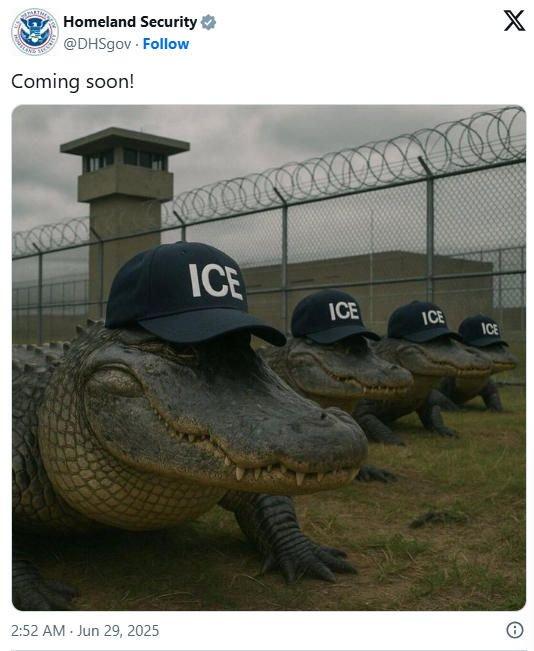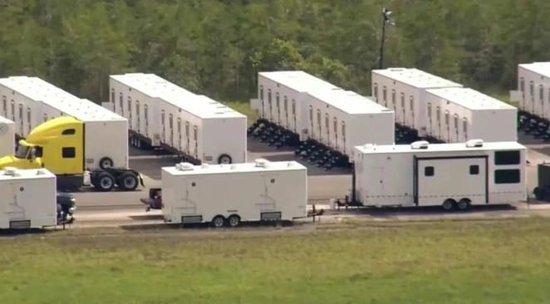

According to reports, on July 1st local time, President Trump visited the newly constructed immigration detention facility “Crocodile Island” in Miami, Florida. Located about 80 kilometers west of Miami, the facility has 5,000 beds and is known as “Crocodile Island” by the White House.
Reports indicate that “Crocodile Island” began operations on July 1st local time, marking one of the Trump administration’s measures to increase the capacity of detention facilities to expel illegal immigrants. During his visit, Trump stated that the facility would house “some of the most dangerous immigrants.”
White House Press Secretary Jen Psaki mentioned on June 30th that the advantage of “Crocodile Island” lies in its isolated location and the presence of dangerous animals around it. Psaki described the detention center as being “surrounded by crocodiles,” which serves as a deterrent for those detained, preventing them from fleeing.
Florida Governor Ron DeSantis and U.S. Department of Homeland Security Secretary Alejandro Mayorkas announced that the first batch of detainees might arrive at the facility on July 2nd.
The U.S. Department of Homeland Security posted an AI-generated image on its social media account, showing a group of crocodiles wearing hats with the logo “U.S. Immigration and Customs Enforcement” outside a prison, accompanied by the caption “Coming Soon!”
The post quickly drew criticism on social media, with U.S. diplomat and Georgetown University lecturer Brett Bronson expressing outrage, stating, “It’s barbaric, lacking in humanity.”
Before inspecting the facility, Trump was asked if he truly intended to have crocodiles eat people who attempted to escape, to which he responded, “I guess that’s our design concept.” Trump also joked that the detainees would learn how to avoid dangerous wildlife, “don’t run straight; run like this,” demonstrating a figure-eight motion with his hands, “and your (survival) chances will increase by about 1%.”
On the other hand, the immigration detention facility faced opposition from local indigenous residents. The Micosuke Indian Tribe condemned the government for using land belonging to their ancestors in a national park for detention, pointing out similarities to the mass arrests and forced displacement of Native Americans during the 19th century.
Talborg Simpkins, Chairman of the Micosuke Tribe Business Committee, released a statement on social media saying: “If the state government can achieve its goals in a more infrastructure-advanced, less impactful location on tribal lands and with less environmental and cultural impact, it will save taxpayers a significant amount of money.”
Simpkins noted that some tribe villages are located within 900 feet (approximately 274 meters) of the entrance to “Crocodile Island,” while the prison is surrounded by the Great Balsam Tree National Preserve, where the tribe has lived for centuries.
Red Star News, Fan Xu Intern, Zhou Yue Xiao Comprehensive News
Editor Zhang Xun, Editor-in-Charge Feng Lingling